Embankment
overflow stepped spillways,
Earth dam spillways with
precast concrete blocks & Gabion stepped weirs
by Hubert CHANSON (h.chanson@uq.edu.au)
M.E., ENSHM Grenoble, INSTN, PhD (Cant.), DEng (Qld),
Eur.Ing., MIEAust., MIAHR , 13th
Arthur Ippen awardee
School of Civil Engrg., Univ. of Queensland, Brisbane QLD
4072, Autralia
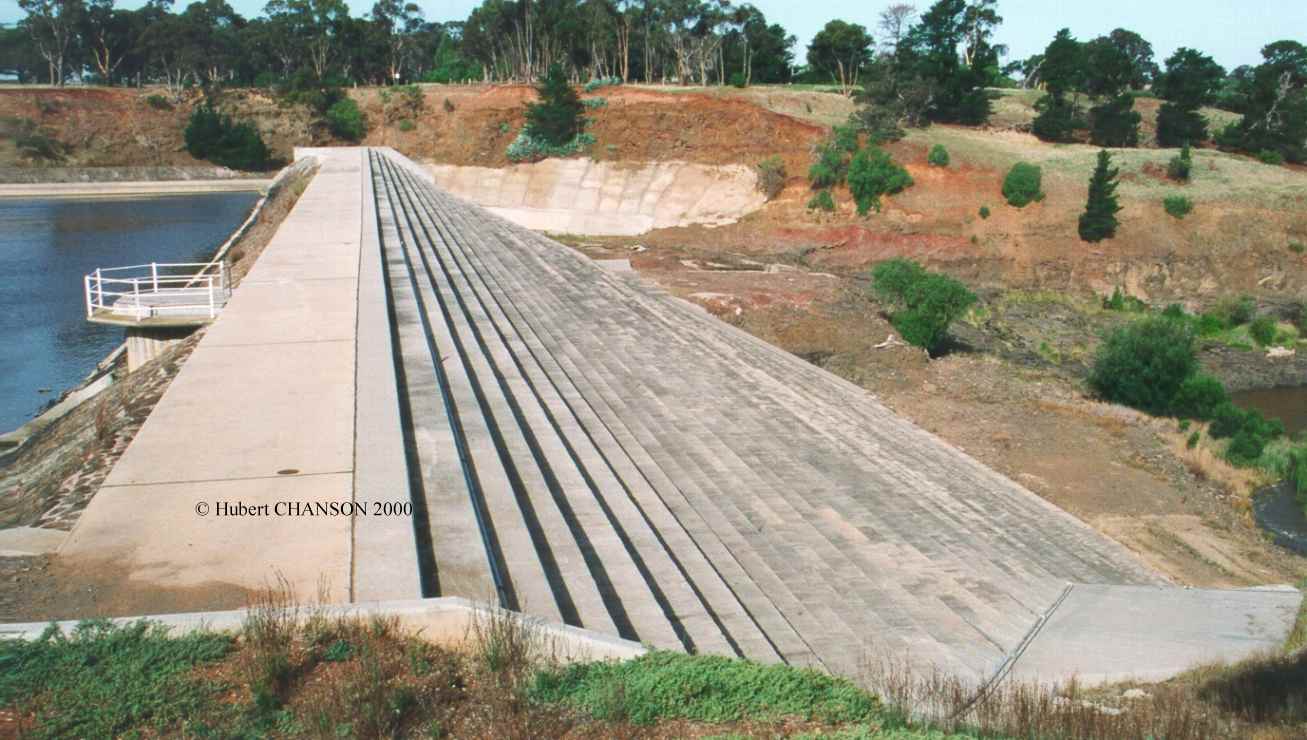
In recent years, the design floods of a number of dams were re-evaluated and
the revised flows were often larger than those used for the original
designs. In many cases, occurrence of the revised design floods would result
in dam overtopping because of the insufficient storage and spillway capacity
of the existing reservoir. A number of overtopping protection systems were
developed for embankments and earthfill dams. These include concrete
overtopping protection systems (Photo No. 1,
No. 10, No.
11), timber cribs, sheet-piles, riprap and gabions, reinforced
earth, Minimum Energy Loss weirs (Photo No.
2), and the precast concrete block protection systems developed by the
Russian engineers (Photo No. 3).
Soviet engineers were among the first to propose a stepped concrete chute
design on the downstream face of embankment dams under the leadership of
P.I. GORDIENKO. The choice of a stepped structure allows the use of
individual blocks interlocked with the next elements and the design
assists in the energy dissipation (CHANSON 1995,
CHANSON 2001, Photo
No. 3). For new dams, a stepped spillway made of concrete blocks may
be considered as the primary flood release structure of the embankment.
The design concept was more recently tested in USA and UK (Photo
No. 4 and 5), although it did not prove
cost-effective there.
An interesting feature of the concrete block system is the flexibility of
the stepped channel bed allowing differential settlements of the
embankment. Individual blocks do not need to be connected to adjacent
blocks. Another advantage is the short construction time on site. In a
typical design, the blocks lay on a filter and erosion protection layer.
The layer has the functions to filter the seepage flow out of the subsoil
and to protect the subsoil layer from erosion by flow in the drainage
layer. Further the protection layer reduces or eliminates the uplift
pressures acting on the concrete blocks. Usually a geotextile membrane is
laid on the embankment before the placing of the layer, and another covers
the protection layer before the installation of the blocks. Suction of the
fluid from underneath the concrete steps can be produced by the pressure
differential created by the high velocity flow over the vertical face of
the step. Drains placed in areas of sub-atmospheric pressure will function
to relieve uplift pressures (Photo No. 5).
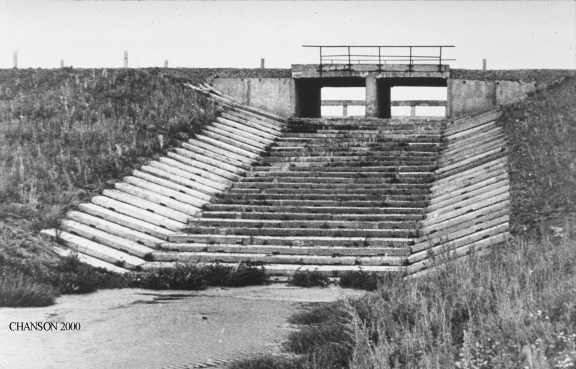
Hydraulic calculations
The overflow embankment protection system is designed to operate in a
skimming flow regime. The steps contribute to a substantial flow
resistance and most of the energy dissipation takes place as a form drag
process (CHANSON et al. 2000,2002, GONZALEZ
2005).
On the stepped chute, both the flow acceleration and boundary layer
development affect the flow properties significantly. The complete flow
calculations can be tedious and most backwater calculations are not
suitable. CHANSON (1999,2001) proposed
a pre-design calculation method which provides a general trend to be used
for a preliminary design (Photo No. 6).
Ideally, the maximum velocity at the downstream chute end is Vmax.
In practice the downstream flow velocity V is smaller than the theoretical
velocity Vmax because of friction losses. In Photo
No. 6, the mean flow velocity is plotted as V/Vmax versus
H1/dc where H1 is the upstream total head
and dc is the critical depth. Both developing flow calculations
and uniform equilibrium flow calculations are shown. Fitting curves must
be plotted to connect these lines.
In skimming flow, free-surface aeration is always significant (Photo
No. 7). It occurs downstream of the inception point of air
entrainment, defined as the point of apparition of 'white waters'. It is
generally accepted that the inception point occurs when the outer edge of
the turbulent boundary layer reaches the surface. Downstream of the point
of inception, a layer containing a mixture of both air and water extends
gradually through the fluid. The rate of growth of the layer is small and
the air concentration distribution varies gradually with distance (CHANSON
1997, 2001). Full details are
presented at {http://www.uq.edu.au/~e2hchans/self_aer.html}.
Design considerations
There are two fundamental design rules for precast concrete block systems
: a skimming
flow in a straight prismatic chute. The step block system was
developed for a skimming flow regime : maximum block stability can only be
achieved in skimming flows (e.g. BAKER 2000).
All but one Russian applications were designed for relatively small
discharge capacity : q ~ 3 m2/s. PRAVDIVETS urged that "the alignment
of the spillway should be straight from the crest to the toe. Any
curvature of the spillway in plan, or change in cross-section, will
cause an uneven distribution of flows within the spillway which, in
general, should be avoided" (e.g. Photo
No. 3).
Usually the channel sidewalls are flat inclined slopes (i.e. trapezoidal
spillway cross-section). The slopes of the sidewalls can be designed as
inclined stepped surfaces (in the flow direction) and may use the same
concrete block system as the main channel (Photo
No. 3). Typical sidewall slopes are about 1V:3H (i.e. 18º). A known
construction weakness is the joint between the chute invert and the
sidewalls. At Brushes Clough, two longitudinal concrete guides were built
to facilitate the installation of the blocks and the connection with the
stone-pitched sidewalls. At the downstream end, the residual energy of the
flow must be dissipated with a small flip bucket arrangement and a
conventional concrete pool. Laboratory tests showed high risks of block
uplift and failure under a hydraulic jump (BAKER
2000).
The Russian experience with overflow earth dam spillways (chute slope =
9.4 to 26.6º) showed the potential of the concept and highlighted that the
quality of the drainage layer is uppermost important. Failure cases were
caused by improper drainage revetment. If the drainage requirements are
fulfilled, the stepped spillway can sustain large floods and discharges
even ice debris. In Siberia, the Magadan experimental dam has resisted for
over 15 years without accident. Additional information on design criteria
can be found in CHANSON (2001) and BAKER
(2000).
GONZALEZ and CHANSON (2007) presented a complete
design procedure for embamkment dam stepped spillways.
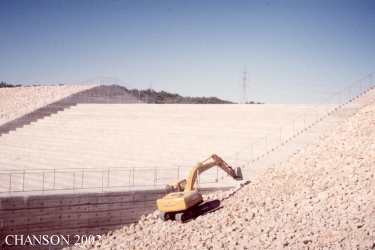
Discussion on earth dam with precast
concrete stepped spillway
Embankment overflow stepped spillways have common features with stepped
storm water systems and sabo channel systems (Photo No. 9), which differ significantly
from concrete dam stepped spillways. Namely the channel has often a
trapezoidal cross-section, the bed slope is moderate (i.e. less than 30
deg.) and the step height ranges from about 0.05 to 0.3 m. Futher strong
interactions may occur between seepage and overflow (e.g. CHANSON
and
TOOMBES 2001, pp. 41-50). Therefore steep stepped chute results
cannot be applied (CHANSON and TOMBES 2001, GONZALEZ and CHANSON 2004a,b). CHANSON
and TOOMBES (2001, pp. 46-50) further discussed a number of key
issues, including the design of the downstream energy disispator. GONZALEZ
and
CHANSON (2007) developed the particular case of small dams.
Practical considerations
In one case (Brushes Clough dam spillway, Photo
No. 4 and 5) numerous acts of
vandalism were reported, including destruction of concrete blocks. In
practice it is recommended to use concrete blocks heavy enough to avoid
their displacement by individuals and to enhance their strength against
acts of vandalism. At the limit another construction technique (e.g. RCC
overlays) should be selected if man-made destruction cannot be prevented.
In Russia, the cheapest construction method uses precast concrete slabs
which are made for the building industry. The slabs are rectangular (3-m
long, 1.5-m wide and 0.160-m thick typically) and they are installed in an
overlapping arrangement with mild steel spacers. A long-term issue would
be the corrosion of the spacers.
Gabion stepped weirs
Gabion stepped weirs are commonly used for embankment protection, river
training and flood control; the stepped design enhances the rate of energy
dissipation in the channel, and it is particularly well-suited to the
construction of gabion stepped weirs (WUTHRICH and
CHANSON 2014). For very-low flow, a porous seepage flow regime may
take place, when the water seeps through the gabion materials and there is
no overflow past the step edges. At larger flow rates, strong air-water
exchanges between seepage and stepped cavity flows are observed, with a
complex bubbly seepage motion in the gabions, leading to a modification of
the step cavity recirculation and lesser flow resistance (ZHANG
and CHANSON 2016). The discharge properties of capped gabion stepped
weirs are typically intermediate between the flat impervious and un-capped
gabion stepped chute flow properties (WUTHRICH and
CHANSON 2015).
Detailed photographs
 Photo
No.
1 : An overflow embankment dam : Melton dam (VIC, Australia). Completed in
1916, the dam was heightened twice because of the rapid reservoir siltation.
During the last refurbishment in 1994, the overflow stepped spillway was
added.
Photo
No.
1 : An overflow embankment dam : Melton dam (VIC, Australia). Completed in
1916, the dam was heightened twice because of the rapid reservoir siltation.
During the last refurbishment in 1994, the overflow stepped spillway was
added.
Photo No. 2 : Chinchilla weir
(Chinchilla QLD, Australia 1973) on 8 Nov. 1997 during low overflow.
Designed with the assistance of Professor Gordon McKAY. Weir height: 14 m,
Crest length: 410m, Spillway capacity: 850 m3/s, Condamine river. The
Chinchilla weir is listed as a "large dam" by the International
Commission on Large Dams (1984). For further techncial data, see CHANSON, Butteworth-Heinemann 1999, pp. 417-421
& 316. More information at : {http://www.uq.edu.au/~e2hchans/mel_weir.html}.
Photo No. 3 : Zaraysk dam (also
called Laraisky), Russia (Courtesy of Prof. Y. PRAVDIVETS). Overflow
embankment spillway made of precast concrete blocks.
Photo No. 4 : Brushes Clough dam
(1859-1991). 26-m high embankment dam refurbished with a new overflow
spillway system in 1991. General view (Courtesy of Mr GARDINER, NWW).
Photo No. 5 : Brushes Clough dam
(1859-1991). Details of the precast blocks (120 kg each) and of the
drainage holes (Courtesy of Mr GARDINER, NWW).
Photo No. 6 : Relationship between the
flow velocity at the end of the chute V, the ideal fluid flow velocity Vmax
(at end of chute), the total head above spillway toe H1 and the
critical flow depth dc for a stepped chute (f = 0.2) (after
CHANSON 1999,2001 - see also http://www.uq.edu.au/~e2hchans/reprints/errata.htm).
Photo No. 7 : Air entrainment in
skimming flow down a 22 degree slope (1V:2.5H) for dc/h = 1.1 (h = 100
mm). Research
experiments at the Hydraulics/Fluid Mechanics Laboratory of the
University of Queensland.
Photo No. 8 : Nappe flow down a 16
degree slope (1V:3.5H) for dc/h = 0.64 (h = 100 mm). Research
experiments at the Hydraulics/Fluid Mechanics Laboratory of the
University of Queensland.
Photo No. 9 : Stepped storm waterway
East of Okazaki city, Aichi prefecture (Japan) in the middle of a
residential area. Photograph taken on 10 Nov. 2001.
Photo No. 10 : Salado 10 embankment
dam and secondary stepped spillway (Courtesy of Craig SAVELA
and USDA, Natural Resources Conservation Service; National Design,
Construction and Soil Mechanics Center, Fort Worth, Texas).
Photo No. 11 : Choctaw 8A embankment
dam and secondary stepped spillway (Courtesy of Craig SAVELA
and USDA, Natural Resources Conservation Service; National Design,
Construction and Soil Mechanics Center, Fort Worth, Texas).
Photo No. 12 and 13 : Melton dam overflow stepped spillway
(Melton VIC, Australia 1916). The Melton dam is an earthfill structure.
Completed in 1916, the dam was heightened twice because of the rapid
reservoir siltation. During the last refurbishment in 1994, an overflow
stepped spillway was added. The overflow stepped spillway is considered to
be the world's largest embankment overflow stepped spillway in terms of
total discharge capacity (CHANSON 2001). Photo
No. 12 : general view (30 Jan. 2000). Photo
No. 13 : details of the dam overflow spillway (30 Jan. 2000).
More about Extreme reservoir siltation
...
Photo No. 14 and 15 : Pedrogao
dam, Moura (Portugal, 2006). Completed in March 2006, the
Pedrogao dam is a RCC gravity dam (H = 43 m, L = 473 m) with an
uncontrolled overflow stepped spillway (h = 0.6 m, 1V:0.75H). The dam is
equipped also witha fish lock/lift. The reservoir is located
immediately downstream of the Alqueva dam which is multipurpose reservoir
for irrigation (326 km of open channels, 9 main pump stations) and
hydropower (2 * 130 MW pump-turbines). Photo
No. 14 : view from right bank on 4 Seopt. 2006. Photo
No.
15 : view from left bank on 4 Sept. 2006.
Photo No.16 to 18: Joe Sippel
weir (Murgon QLD, Australia) - Completed in 1984, the 6.5-m high
stepped weir is used for irrigation and water regulation purposes. The
structure was built of steel sheet piles and concrete slabs. It is located
upstream of the Silverleaf weir. Photo No. 1: in November 1997. Photo No. 2: on 5 March 2013. Photo No. 3: details
of the plung point on 5 March 2013.
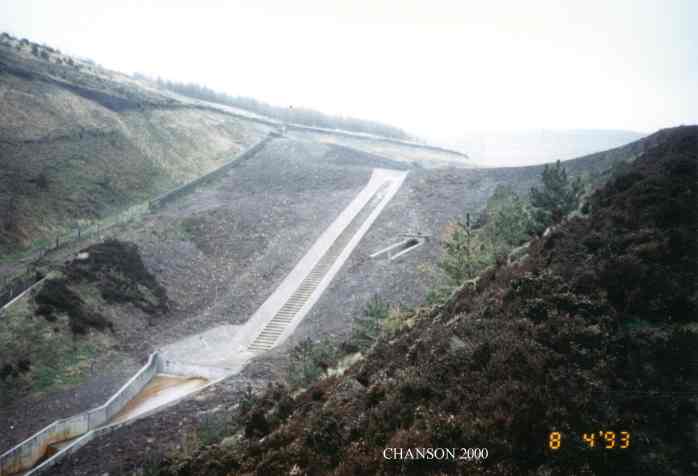 References
References
BAKER, R. (2000). "The CIRIA Guide for the Design of Stepped-Block
Spillways." Intl Workshop on Hydraulics of Stepped Spillways,
Zürich, Switzerland, H.E. MINOR & W.H. HAGER Editors, Balkema Publ., pp.
155-161.
CHANSON, H. (1995). "Hydraulic
Design of Stepped Cascades, Channels, Weirs and Spillways." Pergamon,
Oxford, UK, Jan., 292 pages (ISBN 0-08-041918-6).
CHANSON, H. (1997). "Air Bubble
Entrainment in Free-Surface Turbulent Shear Flows." Academic Press,
London, UK, 401 pages (ISBN 0-12-168110-6).
CHANSON, H. (1999). "The
Hydraulics of Open Channel Flow : An Introduction." Butterworth-Heinemann,
London, UK, 512 pages.
CHANSON, H. (2001). "The Hydraulics of
Stepped Chutes and Spillways." Balkema, Lisse, The Netherlands
(ISBN 90 5809 352 2).
CHANSON, H. (2001). "Hydraulic Design of Stepped Spillways and
Downstream Energy Dissipators." Dam Engineering, Vol. 11, No. 4, pp.
205-242 (ISSN 0 617 00563 X). (Download PDF
File)
CHANSON, H., and GONZALEZ, C.A. (2004). "Recent Advances in Stepped
Spillway Design: Air-Water Flow on Stepped Chutes, Embankment Dam Stepped
Spillway and Other Considerations." in "Fluvial,
Environmental & Coastal Developments in Hydraulic Engineering",
Balkema,
Leiden, The Netherlands, Proc. International Workshop on State-of-the-Art
Hydraulic Engineering, 16-19 Feb. 2004, Bari, Italy, M. MOSSA, Y. YASUDA and
H. CHANSON Ed., pp. 81-97 (ISBN 04 1535 899 X). (PDF
Version at EprintsUQ) (Leaflet and
Order Form)
CHANSON, H., and TOOMBES, L. (2001). "Experimental Investigations of
Air Entrainment in Transition and Skimming Flows down a Stepped Chute.
Application to Embankment Overflow Stepped Spillways." Research Report
No. CE158, Dept. of Civil Engineering, The University of Queensland,
Brisbane, Australia, July (ISBN 1 864995297). (Download
PDF files : Part 1 and Part
2) (Alternate
PDF file at EprintsUQ)
CHANSON, H., and TOOMBES, L. (2002). "Air-Water Flows down Stepped
chutes : Turbulence and Flow Structure Observations." Intl
Jl of Multiphase Flow, Vol. 27, No. 11, pp. 1737-1761 (ISSN
0301-9322). (Download PDF
File)
CHANSON, H., YASUDA,Y., and OHTSU, I.(2000). "Flow Resistance in
Skimming Flow : a Critical Review." Intl Workshop on Hydraulics of
Stepped Spillways, Zürich, Switzerland, H.E. MINOR & W.H. HAGER
Editors, Balkema Publ., pp. 95-102 (ISBN 90 5809 135X). (download
PDF file)
CHANSON, H., YASUDA, Y., and OHTSU, I. (2002). "Flow Resistance in
Skimming Flows and its Modelling." Can Jl of Civ. Eng., Vol. 29, No.
6, pp. 809-819 (ISSN 0315-1468). (Download PDF
File)
GONZALEZ, C.A. (2005). "An Experimental Study of Free-Surface
Aeration on Embankment Stepped Chutes." Ph.D.
thesis, Department of Civil Engineering, The University of
Queensland, Brisbane, Australia. (PDF
version at EprintsUQ)
GONZALEZ, C.A., and CHANSON, H. (2004a). "Interactions between Cavity
Flow and Main Stream Skimming Flows: an Experimental Study." Can
Jl of Civ. Eng., Vol. 31, No. 1, pp. 33-44 (ISSN 0315-1468). (Download PDF
file)
GONZALEZ, C., and CHANSON, H. (2004b). "Effects of Turbulence
Manipulation in Skimming Flows: An Experimental Study." Proceedings
15th Australasian Fluid Mechanics Conference, AFMC, Sydney,
Australia, M. BEHNIA, W. LIN & G.D. McBAIN Ed., Paper AFMC00104, 4 pages
(CD-ROM) (ISBN 1-864-87695-6). (Download
PDF file)
GONZALEZ, C.A., and CHANSON, H. (2007). "Hydraulic Design of Stepped
Spillways and Downstream Energy Dissipators for Embankment Dams." Dam
Engineering, Vol. 17, No. 4, pp. 223-244 (ISSN 0 617 00563 X). (PDF file)
(PDF file at
UQeSpace)
WUTHRICH, D, and CHANSON, H. (2014). "Hydraulics, Air Entrainment and
Energy Dissipation on Gabion Stepped Weir." Journal
of Hydraulic Engineering, ASCE, Vol. 140, No. 9, Paper 04014046, 10
pages (DOI: 10.1061/(ASCE)HY.1943-7900.0000919) (ISSN 0733-9429). (Postprint at
UQeSpace) (PDF file)
WUTHRICH, D, and CHANSON, H. (2015). "Aeration Performances of a
Gabion Stepped Weir with and without Capping." Environmental
Fluid Mechanics, Vol. 15, No. 4, pp. 711-730 and 5 video movies
(DOI: 10.1007/s10652-014-9377-9) (ISSN 1567-7419 [Print] 1573-1510
[Online]). (PDF file) (Postprint
at UQeSpace) (Videos
movies at UQeSpace)
ZHANG, G., and CHANSON, H. (2016). "Gabion Stepped Spillway:
Interactions between Free-Surface, Cavity, and Seepage Flows." Journal
of Hydraulic Engineering, ASCE, Vol. 142, No. 5, Paper 06016002, 5
pages (DOI: 10.1061/(ASCE)HY.1943-7900.0001120) (ISSN 0733-9429). (PDF file) (Preprint at UQeSpace
with colour figures)
Additional bibliography
AMADOR, A., SANCHEZ-JUNY, M., DOLZ, J., SANCHEZ-TEMBLEQUE, F., and PUERTAS,
J. (2004). "Velocity and Pressure Measurements in Skimming Flow in Stepped
Spillways." Proc. Intl Conf. on
Hydraulics of Dams and River Structures, Tehran, Iran, Balkema
Publ., The Netherlands, pp. 279-285.
ANDRE, S., BOILLAT, J.L., SCHLEISS, A.J., and MATOS, J. (2004). "Energy
Dissipation and Hydrodynamic Forces of Aerated Flow over Macro-Roughness
Linings for Overtopped Embankment Dams." Proc.
Intl Conf. on Hydraulics of Dams and River Structures, Tehran,
Iran, Balkema Publ., The Netherlands, pp. 189-196.
AROSQUIPA NINA, Y., WÜTHRICH, D., and CHANSON, H. (2020). "Air-Water Flows
on Stepped Spillways with Inclined Steps." Proceedings of 22nd
Australasian Fluid Mechanics Conference AFMC2020, Brisbane, Australia,
7-10 December, Published by The University of Queensland, Editors H. CHANSON
and R. BROWN, Paper 14, 4 pages (DOI: 10.14264/27b1c79) (ISBN
978-1-74272-341-9). (Deposit
at UQeSpace)
AROSQUIPA NINA, Y., SHI, R., WÜTHRICH, D., and CHANSON, H. (2021).
"Intrusive and Non-Intrusive Air-Water Measurements on Stepped Spillways
with inclined steps: a Physical Study on Air Entrainment and Energy
Dissipation." Hydraulic Model Report No. CH121/21, School of Civil
Engineering, The University of Queensland, Brisbane, Australia, 258 pages
& 8 video movies (DOI: 10.14264/e3f4d48) (ISBN 978-1-74272-348-8). (Deposit at UQeSpace) (Movies at UQeSpace)
AROSQUIPA NINA, Y, SHI, R., WÜTHRICH, D., and CHANSON, H. (2022). "
Air–Water Flows and Head Losses on Stepped Spillways with Inclined Steps." Journal
of Irrigation and Drainage Engineering, ASCE, Vol. 148, No. 11, Paper
04022037, 15 pages (DOI: 10.1061/(ASCE)IR.1943-4774.0001701) (ISSN 0733-9437
[Print]; ISSN: 1943-4774 [online]). (PDF file) (Preprint at UQeSpace)
BOES, R.M. (2000). "Zweiphasenstroömung und Energieumsetzung an
Grosskaskaden." Ph.D. thesis,
VAW-ETH, Zürich, Switzerland (in German). (also Mitteilungen der
Versuchsanstalt fur Wasserbau, Hydrologie und Glaziologie, ETH-Zurich,
Switzerland, No. 166).
CAROSI, G., and CHANSON, H. (2006). "Air-Water Time and Length Scales in
Skimming Flows on a Stepped Spillway. Application to the Spray
Characterisation." Report No. CH59/06,
Div. of Civil Engineering, The University of Queensland, Brisbane,
Australia, July, 142 pages (ISBN 1864998601). (PDF
version at EprintsUQ)
CHANSON, H. (1995). "History of Stepped Channels and Spillways : a
Rediscovery of the 'Wheel'." Can Jl of Civ. Eng., Vol. 22, No. 2,
April, pp. 247-259 (ISSN 0315-1468). (Download
PDF file)
CHANSON, H. (1998). "Review of Studies on Stepped Channel Flows." Hydraulic
Characteristics of Stepped Channel Flows, Workshop on Flow
Characteristics around Hydraulic Structures and River Environment, Nihon
University, Tokyo, Japan, November, Invited keynote lecture, 25 pages. (PDF
Version at EprintsUQ)
CHANSON, H. (1998). "Utilisation of Stepped Channels and Study of Stepped
Channel Flows in Australia." Hydraulic
Characteristics of Stepped Channel Flows, Workshop on Flow
Characteristics around hydraulic Structures and River Environment, Nihon
University, Tokyo, Japan, November, Invited keynote lecture, 21 pages. (PDF
Version at EprintsUQ)
CHANSON, H. (2000). "A Review of Accidents and Failures of Stepped Spillways
and Weirs." Proc. Instn Civ. Engrs Water and Maritime Engrg, UK,
Vol. 142, Dec., pp. 177-188 (ISSN 0965-0946). (Download
PDF file)
CHANSON, H. (2004). "Drag Reduction in Skimming Flow on Stepped Spillways by
Aeration." Jl of Hyd. Research,
IAHR, Vol. 42, No. 3 , pp. 316-322 (ISSN 0022-1686). (Download
PDF file)
CHANSON, H. (2006). "Hydraulics of Skimming Flows on Stepped Chutes: the
Effects of Inflow Conditions?" Jl of Hyd.
Res., IAHR, Vol. 44, No. 1, pp. 51-60 (ISSN 0022-1686). (Download
PDF file) (PDF
version at UQeSpace)
CHANSON, H. (2008). "Physical Modelling, Scale Effects and Self-Similarity
of Stepped Spillway Flows." Proc. World
Environmental and Water Resources Congress 2008 Ahupua'a,
ASCE-EWRI, 13-16 May, Hawaii, R.W. BADCOCK Jr and R. WALTON Eds., Paper 658,
10 pages (ISBN: 978-0-7844-0976-3). (PDF
file at UQeSpace)
CHANSON, H. (2009). "Embankment Overtopping Protections System and Earth Dam
Spillways." in "Dams: Impact,
Stability and Design", Nova
Science Publishers, Hauppauge NY, USA, Ed. W.P. HAYES and M.C.
BARNES, Chapter 4, pp. 101-132 (ISBN 978-1-60692-618-5). (PDF
file at UQeSpace)
CHANSON, H. (2013). "Interactions between a Developing Boundary Layer and
the Free-Surface on a Stepped Spillway: Hinze Dam Spillway Operation in
January 2013." Proc. 8th International
Conference on Multiphase Flow ICMF 2013, Jeju, Korea, 26-31 May,
Gallery Session ICMF2013-005 (Video duration: 2:15). (Description)
(Record
at
UQeSpace) (Video
movie at UQeSpace) (Video movie on YouTube)
CHANSON, H. (2013). "Hydraulics of Aerated Flows: Qui Pro Quo?" Journal
of Hydraulic Research, IAHR, Invited Vision paper, Vol. 51, No. 3,
pp. 223-243 (DOI: 10.1080/00221686.2013.795917) (ISSN 0022-1686). (Postprint at
UQeSpace) (PDF
file)
CHANSON, H. (2014). "Embankment Dam Spillways and Energy Dissipators." in "Labyrinth and Piano Key Weirs II - PKW
2013." Proceedings of 2nd
International Workshop on Labyrinth and Piano Key Weirs - PKW 2013,
20-22 Nov., Paris-Chatou, France, CRC Press, Taylor & Francis, Leiden,
the Netherlands, Editors S. ERPICUM, F. LAUGIER, M. PFISTER, M. PIROTTON,
G.M. CICERO, and A.J. SCHLEISS, Invited keynote, lecture, pp. 23-37 (ISBN
978-1-138-00085-8). (PDF
file) (Record
at
UQeSpace)
CHANSON, H. (2021). "Stepped Spillway Prototype Operation, Spillway Flow and
Air Entrainment: the Hinze Dam, Australia." Hydraulic Model Report No.
CH123/21, School of Civil Engineering, The University of Queensland,
Brisbane, Australia, 183 pages (DOI: 10.14264/c8d5280) (ISBN
978-1-74272-354-9 [Print]; 978-1-74272-355-6 [Electronic]). (Deposit at UQeSpace)
CHANSON, H. (2021). "Hydraulics and Energy Dissipation on Stepped Spillways
- Prototype and Laboratory Experiences." Proceedings of the 2nd
International Symposium of Advances in Water Disaster Mitigation and Water
Environment Regulation WDWE2021, July 7-9, Chengdu, China, Sichuan
University Press, P. LIN and J ZHANG Editors, Invited Plenary Keynote
Paper, pp. 1-15 (ISBN 978-7-5690-4817-9). (Plenary Keynote Lecture on YouTube) (Published paper) (Postprint with colour figures) (Postprint at UQeSpace)
CHANSON, H. (2022). "Energy dissipation on stepped spillways and hydraulic
challenges - Prototype and laboratory experiences." Journal of
Hydrodynamics, Vol. 34, No. 1, pp. 52-62 (DOI:
10.1007/s42241-022-0005-8) (ISSN 1001-6058). (PDF file) (Postprint at UQeSpace)
CHANSON, H. (2022). "On Air Entrapment Onset and Surface Velocity in
High-Speed Turbulent Prototype Flows." Flow Measurement and
Instrumentation, Vol. 83, Paper 102122, 9 pages (DOI:
10.1016/j.flowmeasinst.2022.102122) (ISSN 0955-5986). (Postprint at UQeSpace) (PDF file)
CHANSON, H. (2022). "Stepped Spillway Prototype Operation and Air
Entrainment: Toward a Better Understanding of the Mechanisms Leading to Air
Entrainment in Skimming Flows." Journal of Hydraulic Engineering,
ASCE, Vol. 148, No. 11, Paper 05022004, 17 pages (DOI:
10.1061/(ASCE)HY.1943-7900.0002015) (ISSN 0733-9429). (PDF file) (Preprint at UQeSpace)
CHANSON, H. (2025). "Stepped Spillway Physical Studies at the University of
Queensland (1994-)." Hydraulic Model Report No. CH129/25, School of
Civil Engineering, The University of Queensland, Brisbane, Australia, 131
pages (DOI: 10.14264/8d371d2) (ISBN 978-1-74272-490-4 [Print];
978-1-74272-489-8 [Electronic]). (PDF at UQeSpace)
CHANSON, H., BUNG, D., and MATOS, J. (2015). "Stepped spillways and
cascades." in "Energy Dissipation
in Hydraulic Structures." IAHR
Monograph, CRC Press, Taylor & Francis Group, Leiden, The
Netherlands, H. CHANSON Editor, pp. 45-64 (ISBN 978-1-138-02755-8). (PDF file) (Record at UQeSpace)
CHANSON, H., and CAROSI, G. (2007). "Turbulent Time and Length Scale
Measurements in High-Velocity Open Channel Flows." Experiments
in Fluids, Vol. 42, No. 3, pp. 385-401 (DOI
10.1007/s00348-006-0246-2) (ISSN 0723-4864). (PDF
File) (PDF
file
at UQeSpace)
CHANSON, H., and GONZALEZ, C.A. (2004). "Stepped Spillways for Embankment
dams: Review, Progress and Development in Overflow Hydraulics." Proc.
Intl Conf. on Hydraulics of Dams and River Structures, Tehran,
Iran, Balkema Publ., The Netherlands, pp. 287-294 (ISBN 90 5809 632 7).
(Also CD-ROM, Taylor & Francis,
ISBN 90 5809 683 4.). (download PDF
file)
CHANSON, H., and GONZALEZ, C.A. (2005). "Physical Modelling and Scale
Effects of Air-Water Flows on Stepped Spillways." Journal
of Zhejiang University SCIENCE, Vol. 6A, No. 3, March, pp. 243-250
(ISSN 1009-3095). (Download PDF
file)
CHANSON, H., and TOOMBES, L. (1997). "Flow Aeration at Stepped cascades." Research
Report No. CE155, Dept. of Civil Engineering, University of
Queensland, Australia, June, 110 pages (ISBN 0 86776 730 8). (PDF
version at EprintsUQ)
CHANSON, H., and TOOMBES, L. (2002). "Experimental Study of Gas-Liquid
Interfacial Properties in a Stepped Cascade Flow." Environmental Fluid
Mechanics, Vol. 2, No. 3, pp. 241-263 (ISSN 1567-7419). (Download
PDF File)
CHANSON, H., and TOOMBES, L. (2002). "Experimental Investigations of Air
Entrainment in Transition and Skimming Flows down a Stepped Chute." Can.
Jl of Civil Eng., Vol. 29, No. 1, pp. 145-156. (ISSN 0315-1468). (Download PDF File)
CHANSON, H., and TOOMBES, L. (2004). "Hydraulics of Stepped Chutes: the
Transition Flow." Jl of Hyd. Res.,
IAHR, Vol. 42, No. 1, pp. 43-54 (ISSN 0022-1686). (Download
PDF file)
CHANSON, H., and WHITMORE, R.L. (1996). "Investigation of the Gold Creek Dam
Spillway, Australia." Research Report No. CE153, Dept. of Civil
Engineering, University of Queensland, Australia, 60 pages (ISBN 0 86776 667
0). (PDF version at
EprintsUQ)
FELDER, S., and CHANSON, H. (2008). "Turbulence and Turbulent Length and
Time Scales in Skimming Flows on a Stepped Spillway. Dynamic Similarity,
Physical Modelling and Scale Effects." Report
No. CH64/07, Hydraulic Model Report CH series, Division of Civil
Engineering, The University of Queensland, Brisbane, Australia, March, 217
pages (ISBN 9781864998870). (PDF
file at UQeSpace)
FELDER, S., and CHANSON, H. (2009). "Turbulence, Dynamic Similarity and
Scale Effects in High-Velocity Free-Surface Flows above a Stepped Chute." Experiments in Fluids, Vol. 47, No. 1,
pp. 1-18 (DOI: 10.1007/s00348-009-0628-3) (ISSN 0723-4864). (PDF file at UQeSpace)
FELDER, S., and CHANSON, H. (2011). "Energy Dissipation down a Stepped
Spillway with Non-Uniform Step Heights." Journal
of Hydraulic Engineering, ASCE, Vol. 137, No. 11, pp. 1543-1548
(DOI 10.1061/(ASCE)HY.1943-7900.0000455) (ISSN 0733-9429). (PDF file) (Postprint
at
UQeSpace)
FELDER, S., and CHANSON, H. (2013). "Air Entrainment and Energy Dissipation
on Porous Pooled Stepped Spillways." Proceedings of International Workshop on
Hydraulic Design of Low-Head Structures, IAHR, 20-22 Feb.,
Aachen, Germany, D. BUNG and S. PAGLIARA Editors, Bundesanstalt für
Wasserbau (BAW, Karlsruhe), pp. 87-97 (ISBN 978-3-939230-04-5). (PDF
file)
FELDER, S., and CHANSON, H. (2015). "Aeration and Air–Water Mass Transfer on
Stepped Chutes with Embankment Dam Slopes." Environmental
Fluid Mechanics, Vol. 15, No. 4, pp. 695–710 (DOI:
10.1007/s10652-014-9376-x) (ISSN 1567-7419 [Print] 1573-1510 [Online]). (PDF file)
(Postprint
at
UQeSpace)
FELDER, S., and CHANSON, H. (2016). "Simple Design Criterion for Residual
Energy on Embankment Dam Stepped Spillways." Journal
of Hydraulic Engineering, ASCE, Vol. 142, No. 4, Paper 04015062, 11
pages (DOI: 10.1061/(ASCE)HY.1943-7900.0001107) (ISSN 0733-9429). (PDF file) (Preprint at UQeSpace)
GONZALEZ, C.A. (2005). "An Experimental Study of Free-Surface Aeration on
Embankment Stepped Chutes." Ph.D. thesis,
Department of Civil Engineering, The University of Queensland, Brisbane,
Australia. (PDF version
at EprintsUQ)
GONZALEZ, C.A., and CHANSON, H. (2006). "Air Entrainment and Energy
Dissipation on Embankment Stepped Spillways." Proc.
International Symposium on Hydraulic Structures, IAHR, Ciudad
Guayana, Venezuela, Recent Developments on Hydraulic Structures, from Hybrid
Modeling to Operation and Repairs, A. MARCANO and A. MARTINEZ Ed., pp.
487-497 (ISBN 980 12 2177 1). (PDF
version at EprintsUQ)
GONZALEZ, C.A., and CHANSON, H. (2008). "Turbulence and Cavity Recirculation
in Air-Water Skimming Flows on a Stepped Spillway."
Journal of Hydraulic Research, IAHR, Vol. 46, No. 1, pp. 65-72
(ISSN 0022-1686). (PDF
file at UQeSpace)
GONZALEZ, C.A., and CHANSON, H. (2008). "Turbulence Manipulation in
Embankment Stepped Chute Flows: an Experimental Study." European
Journal of Mechanics B/Fluids, Vol. 27, No. 4, pp. 388-408 (DOI:
10.1016/j.euromechflu.2007.09.003) (ISSN 0997-7546). (PDF
file at UQeSpace)
GONZALEZ, C.A., TAKAHASHI, M., and CHANSON, H. (2005). "Effects of Step
Roughness in Skimming Flows: an Experimental Study." Research
Report No. CE160, Dept. of Civil Engineering, The University
of Queensland, Brisbane, Australia, July, 149 pages (ISBN 1864998105). (Download
PDF File) (PDF
Version at EprintsUQ)
GONZALEZ, C.A., TAKAHASHI, M., and CHANSON, H. (2008). "An Experimental
Study of Effects of Step Roughness in Skimming Flows on Stepped Chutes." Journal of Hydraulic Research, IAHR,
Vol. 46, No. Extra Issue 1, pp. 24-35 (ISSN 0022-1686). (PDF
file at UQeSpace)
GUENTHER, P., FELDER, S., and CHANSON, H. (2013). "Flat and Pooled Stepped
Spillways for Overflow Weirs and Embankments: Cavity Flow Processes, Flow
Aeration and Energy Dissipation." Proceedings of International Workshop on
Hydraulic Design of Low-Head Structures, IAHR, 20-22 Feb.,
Aachen, Germany, D. BUNG and S. PAGLIARA Editors, Bundesanstalt für
Wasserbau (BAW, Karlsruhe), pp. 77-86 (ISBN 978-3-939230-04-5). (PDF file)
MATOS, J., SÁNCHEZ, M., QUINTELA, A., and DOLZ, J. (1999). "Characteristic
Depth and Pressure Profiles in Skimming Flow over Stepped Spillways." Proc. 28th IAHR Congress, Graz,
Austria, Session B14, 6 pages.
MURZYN, F., and CHANSON, H. (2008). "Experimental Assessment of Scale
Effects Affecting Two-Phase Flow Properties in Hydraulic Jumps." Experiments
in Fluids, Vol. 45, No. 3, pp. 513-521 (DOI:
10.1007/s00348-008-0494-4) (ISSN 0723-4864). (PDF
file
at UQeSpace)
OHTSU, I., and YASUDA, Y. (1997). "Characteristics of Flow Conditions on
Stepped Channels." Proc. 27th IAHR
Biennal Congress, San Francisco, USA, Theme D, pp. 583-588.
OHTSU, I., YASUDA, Y., and TAKAHASHI, M. (2004). "Flow Characteristics of
Skimming Flows in Stepped Channels." Jl
of Hyd. Engrg., ASCE, Vol. 130, No. 9, pp. 860-869.
SUN, S., and CHANSON, H. (2013). "Characteristics of Clustered Particles in
Skimming Flows on a Stepped Spillway." Environmental
Fluid Mechanics, Vol. 13, No. 1, pp. 73-87 (DOI:
10.1007/s10652-012-9255-2) (ISSN 1567-7419 [Print] 1573-1510 [Online]). (Postprint
at UQeSpace) (PDF
file)
TAKAHASHI, M., GONZALEZ, C.A., and CHANSON, H. (2006). "Self-Aeration and
Turbulence in a Stepped Channel: Influence of Cavity Surface Roughness." International Journal of Multiphase Flow,
Vol. 32, pp. 1370-1385 (DOI:10.1016/j.ijmultiphaseflow.2006.07.001) (ISSN
0301-9322). (PDF file at
EprintsUQ)
TOOMBES, L. (2002). "Experimental Study of Air-Water Flow Properties on
Low-Gradient Stepped Cascades." Ph.D.
thesis, Dept of Civil Engineering, The University of Queensland. (PDF version at EprintsUQ)
TOOMBES, L., and CHANSON, H. (2005). "Air-Water Mass Transfer on a Stepped
Waterway." Jl of Environ. Engrg.,
ASCE, Vol. 131, No. 10, pp. 1377-1386 (ISSN 0733-9372). (Download
PDF file)
TOOMBES, L., and CHANSON, H. (2008). "Flow Patterns in Nappe Flow Regime
down Low Gradient Stepped Chutes." Journal
of Hydraulic Research, IAHR, Vol. 46, No. 1, pp. 4-14 (ISSN
0022-1686). (PDF
file at UQeSpace)
WANG, H., FELDER, S., and CHANSON, H. (2014). "An Experimental Study of
Turbulent Two-Phase Flow in Hydraulic Jumps and Application of a Triple
Decomposition Technique." Experiments in
Fluids, Vol. 55, No. 7, Paper 1775, 18 pages & 2 video movies
(DOI: 10.1007/s00348-014-1775-8) (ISSN 0723-4864). (Postprint
at UQeSpace) (PDF
file) (Video
movies at UQeSpace)
WUTHRICH, D., and CHANSON, H. (2014). "Aeration and Energy Dissipation over
Stepped Gabion Spillways: a Physical Study." Hydraulic
Model Report No. CH92/13, School of Civil Engineering, The
University of Queensland, Brisbane, Australia, 171 pages and 5 video movies
(ISBN 9781742720944). (PDF
at UQeSpace) (Video
movies at UQeSpace)
YASUDA, Y., and OHTSU, I. (2000). "Characteristics of Plunging Flows in
Stepped Channel Chutes." Intl Workshop on
Hydraulics of Stepped Spillways, Zürich, Switzerland, Balkema
Publ., pp. 147-152.
WANG, H., LENG, X., and CHANSON, H. (2017). "Bores and Hydraulic Jumps.
Environmental and Geophysical Applications." Engineering
and
Computational Mechanics, Proceedings of the Institution of Civil
Engineers, UK, Vol. 170, No. EM1, pp. 25-42 (DOI: 10.1680/jencm.16.00025)
(ISSN 1755-0777). (PDF
file) (Reprint
at
UQeSpace)
ZHANG, G. (2017). "Free-Surface Aeration, Turbulence, and Energy Dissipation
on Stepped Chutes with Triangular Steps, Chamfered Steps, and Partially
Blocked Step Cavities." Ph.D. thesis, The University of Queensland,
School of Civil Engineering, 361 pages (DOI:
10.14264/uql.2017.906). (PDF
at UQeSpace)
ZHANG, G., and CHANSON, H. (2016). "Hydraulics of the Developing Flow Region
of Stepped Spillways. I: Physical Modeling and Boundary Layer Development."
Journal of Hydraulic Engineering,
ASCE, Vol. 142, No. 7, 8 pages (DOI: 10.1061/(ASCE)HY.1943-7900.0001138)
(ISSN 0733-9429). (Preprint
with
colour figures) (PDF
file)
ZHANG, G., and CHANSON, H. (2016). "Hydraulics of the Developing Flow Region
of Stepped Spillways. II: Pressure and Velocity Fields." Journal
of Hydraulic Engineering, ASCE, Vol. 142, No. 7, 9 pages
(DOI:10.1061/(ASCE)HY.1943-7900.0001136) (ISSN 0733-9429). (Preprint with colour
figures) (PDF
file)
ZHANG, G., and CHANSON, H. (2018). "Air-water Flow Properties in Stepped
chutes with Modified Step and Cavity Geometries." International Journal
of Multiphase Flow, Vol. 99, pp. 423-436 (DOI:
10.1016/j.ijmultiphaseflow.2017.11.009) (ISSN 0301-9322). (PDF file) (Record at UQeSpace)
ZHANG, G., and CHANSON, H. (2018). "Effects of Step and Cavity Shapes on
Aeration and Energy Dissipation Performances of Stepped Chutes." Journal
of Hydraulic Engineering, ASCE, Vol. 144, No. 9, Paper 04018060, 12
pages (DOI: 10.1061/(ASCE)HY.1943-7900.0001505) (ISSN 0733-9429). (PDF file) (Preprint at
UQeSpace)
ZHANG, G., and CHANSON, H. (2019). "Application of Optical Flow Methods to
Aerated Skimming Flows above Triangular and Trapezoidal Step Cavities." Journal
of Hydraulic Research, IAHR, Vol. Vol. 57, No. 4 (2019), pp. 488-497
(DOI: 10.1080/00221686.2018.1489900) (ISSN 0022-1686). (PDF
file) (Deposit
at UQeSpace)
Internet links
Air entrainment on chute and stepped spillways
... {http://www.uq.edu.au/~e2hchans/self_aer.html}
Current
expertise and experience on stepped channel flows
{http://www.uq.edu.au/~e2hchans/dpri/topic_2.html}
Minimum Energy Loss
(MEL) weir design: an overflow earthfill embankment dam
{http://www.uq.edu.au/~e2hchans/mel_weir.html}
Photographs
of
stepped spillways
{http://www.uq.edu.au/~e2hchans/photo.html#Step_spillways}
Sabo check dams
{http://www.uq.edu.au/~e2hchans/sabo.html}
Timber crib weirs ...
{http://www.uq.edu.au/~e2hchans/tim_weir.html}
CIRIA
{http://www.ciria.org.uk/about.htm} CIRIA Report : http://www.ciria.org.uk/publications/pubscat/sp142.htm
USBR Concrete Step
Overtopping Protection{http://www.usbr.gov/wrrl/steps/}
Video movie on YouTube
Stepped Spillway Research - {https://youtu.be/j_AsUXD4D3M}
Acknowledgments
The author thanks also the following people in providing some information :
Dr R. BAKER (formerly Salford University, UK); Mr K.D. GARDINER (NWW, UK);
Professor Y. PRAVDIVETS (Moscow Institute of Civil Engineers, Russia); Mr
Craig SAVELA (USDA-NRCS).
License

This work is licensed under a Creative
Commons Attribution-NonCommercial 3.0 Unported License.
Hubert CHANSON
is a Professor in Civil Engineering, Hydraulic Engineering and
Environmental Fluid Mechanics at the University
of Queensland, Australia. His research interests include design of
hydraulic structures, experimental investigations of two-phase flows,
applied hydrodynamics, hydraulic engineering, water quality modelling,
environmental fluid mechanics, estuarine processes and natural resources.
He has been an active consultant for both governmental agencies and
private organisations. His publication record includes over 1200
international refereed papers and his work was cited over 10,000 times
(WoS) to 26,000 times (Google
Scholar) since 1990. His h-index is 47 (WoS), 51 (Scopus) and 79 (Google
Scholar), and he is ranked among the 150 most cited researchers in
civil engineering in Shanghai’s
Global Ranking of Academics. Hubert Chanson is the author of twenty
books, including "Hydraulic Design
of Stepped Cascades, Channels, Weirs and Spillways" (Pergamon,
1995), "Air Bubble Entrainment in
Free-Surface Turbulent Shear Flows" (Academic
Press, 1997), "The Hydraulics
of Open Channel Flow: An Introduction" (Butterworth-Heinemann,
1st edition 1999, 2nd
editon 2004), "The Hydraulics of
Stepped Chutes and Spillways" (Balkema,
2001), "Environmental
Hydraulics of Open Channel Flows" (Butterworth-Heinemann,
2004), "Tidal
Bores, Aegir, Eagre, Mascaret, Pororoca: Theory And Observations" (World
Scientific, 2011), "Applied
Hydrodynamics:
an Introduction" (CRC
Press, 2014). He co-authored three further books "Fluid Mechanics
for Ecologists" (IPC Press, 2002), "Fluid Mechanics for Ecologists.
Student Edition" (IPC, 2006) and
"Fish Swimming in Turbulent Waters. Hydraulics Guidelines
to assist Upstream Fish Passage in Box Culverts" (CRC Press 2021). His textbook "The Hydraulics
of Open Channel Flows: An Introduction" has already been translated
into Spanish (McGraw-Hill
Interamericana) and Chinese (Hydrology Bureau of Yellow
River Conservancy Committee), and the second
edition was published in 2004. In 2003, the IAHR
presented him with the 13th Arthur Ippen Award
for outstanding achievements in hydraulic engineering. The American
Society of Civil Engineers, Environmental and Water Resources Institute
(ASCE-EWRI) presented him with the 2004 award for the Best Practice paper
in the Journal of Irrigation and Drainage Engineering ("Energy
Dissipation
and Air Entrainment in Stepped Storm Waterway" by Chanson and
Toombes 2002), the 2018 Honorable Mention Paper Award for "Minimum Specific
Energy and Transcritical Flow in Unsteady Open-Channel Flow" by
Castro-Orgaz and Chanson (2016) in the ASCE Journal of Irrigation and
Drainage Engineering, the 2020 Outstanding Reviewer Award, and the 2021
Outstanding Reviewer Award. The Institution of Civil Engineers (UK)
presented him the 2018 Baker Medal. In 2018, he was inducted a Fellow of
the Australasian Fluid
Mechanics Society. Hubert Chanson edited further several books : "Fluvial, Environmental and Coastal
Developments in Hydraulic Engineering" (Mossa, Yasuda & Chanson
2004, Balkema), "Hydraulics.
The
Next Wave" (Chanson & Macintosh 2004, Engineers
Australia), "Hydraulic
Structures:
a Challenge to Engineers and Researchers" (Matos & Chanson 2006,
The University of Queensland), "Experiences and
Challenges in Sewers: Measurements and Hydrodynamics" (Larrate &
Chanson 2008, The University of
Queensland), "Hydraulic
Structures:
Useful Water Harvesting Systems or Relics?" (Janssen & Chanson
2010, The University of Queensland),
"Balance
and Uncertainty: Water in a Changing World" (Valentine et al. 2011,
Engineers Australia), "Hydraulic
Structures and Society – Engineering Challenges and Extremes"
(Chanson and Toombes 2014, University
of Queensland), "Energy
Dissipation
in Hydraulic Structures" (Chanson 2015, IAHR
Monograph, CRC Press). He chaired the Organisation of the 34th
IAHR World Congress held in Brisbane, Australia between 26 June and
1 July 2011. He chaired the Scientific Committee of the 5th IAHR
International Symposium on Hydraulic Structures held in Brisbane in
June 2014. He co-chaired the Organisation of the 22nd Australasian Fluid
Mechanics Conference held as a hybrid format in Brisbane, Australia on
6-10 December 2020.
His Youtube channel is: {https://www.youtube.com/@Hubert_Chanson}.
His Internet home page is http://www.uq.edu.au/~e2hchans.
He also developed a gallery of photographs website {http://www.uq.edu.au/~e2hchans/photo.html}
that received more than 2,000 hits per month since inception.
More pictures of stepped spillways are here
... Pictures of staircase fountains are here
...
Internet Resources in Environmental Fluid
Mechanics and Water Engineering
More on Current
expertise
and experience on stepped channel flows...
More about timber crib weirs
... More about steel
dams ...
More about engineering
failures ... More about The Formal
Water Garden ....
More about Minimum Energy Loss weirs ...
This page was visited : 22,221 times between
20-10-2000 and June 2012.
Last updated on 26/09/2025.


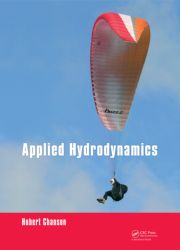
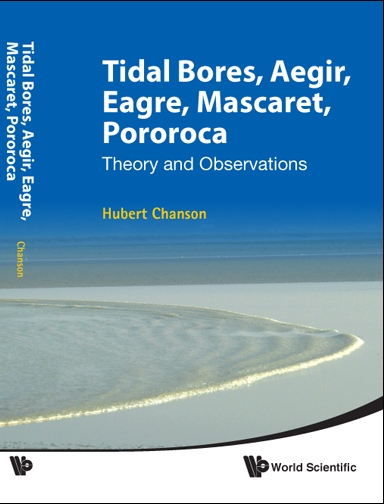
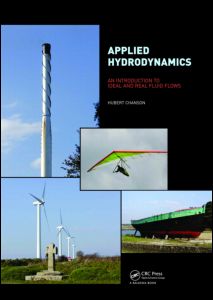
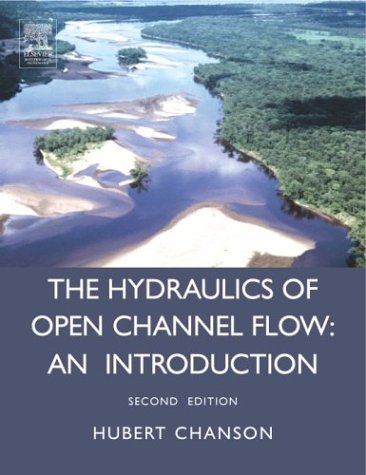
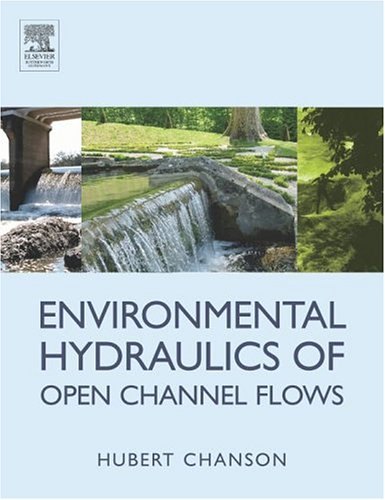

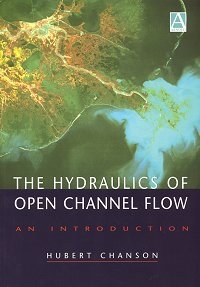
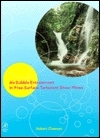
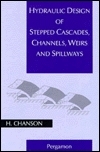




 Photo
No.
1 : An overflow embankment dam : Melton dam (VIC, Australia). Completed in
1916, the dam was heightened twice because of the rapid reservoir siltation.
During the last refurbishment in 1994, the overflow stepped spillway was
added.
Photo
No.
1 : An overflow embankment dam : Melton dam (VIC, Australia). Completed in
1916, the dam was heightened twice because of the rapid reservoir siltation.
During the last refurbishment in 1994, the overflow stepped spillway was
added.
 References
References










